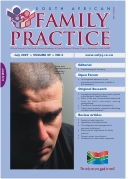Effect of use of insecticide treated nets on birth outcomes among primips in a peri-urban slum settlement in south- east, Nigeria
Keywords:
ITN, Primigravidae, Birth outcomes
Abstract
Introduction Each year in sub-Saharan Africa, where 80 to 90% of the world’s malaria cases occur, approximately 19 to 24 million women are at risk for malaria and its adverse consequences during pregnancy. The major impact of malaria during pregnancy in these regions is caused by persistent or recurrent, predominantly low-grade, sometimes sub-patent, parasitaemia. In Nigeria, malaria has severe negative effects on maternal health and birth outcomes, resulting in maternal anaemia, a high incidence of miscarriages and low birth weight. Primigravidae and secundigravidae are most at risk. Resistance to first-line antimalarials has increased in sub-Saharan Africa, and the available arsenal of alternative tools for malaria control in pregnancy is very limited. One of the most promising of these tools is insecticide-treated bed nets (ITNs), which have been shown to reduce the number of infective mosquito bites by 70 to 90% in a variety of ecologic settings. In Nigeria, the current use of ITNs by the at-risk groups, pregnant women and children under five years, is just 1%, according to the latest report of the Nigeria Demographic and Health Survey (NDHS). Aim This study aimed at examining the effects of the use of ITNs on pregnancy outcomes among 208 primigravidae. Methodology The study design was an analytical case control. One hundred and four subjects, the intervention group, received ITNs between August 2003 and January 2004. The other 104 subjects were the control. Data were obtained using the new World Health Organization antenatal care classifying form and the basic component checklist, and a self-structured, 30-item pre-tested questionnaire. The Apgar scores of the babies and their birth weights were observed and recorded for both the intervention and the control groups. Results The results showed that 83% of babies of mothers in the intervention group had a good condition at birth, while 87% of babies of mothers in the control group had a good condition at birth (p larger than 0.07; X2=1.69). A small increase in mean birth weight (0.001kg) of the babies of mothers in the intervention group was observed over those of mothers in the control group (p larger than 0.90). This showed that there were no significant beneficial impacts of the use of ITNs on foetal condition at birth, mean birth weight and low birth weight. Conclusion The use of ITNs by primigravidae in Okpoko, a peri-urban slum in south-eastern Nigeria, showed no significant impact on pregnancy outcome.
Published
2007-07-04
Issue
Section
Original Research
By submitting manuscripts to SAFP, authors of original articles are assigning copyright to the South African Academy of Family Physicians. Copyright of review articles are assigned to the Publisher, Medpharm Publications (Pty) Ltd, unless otherwise specified. Authors may use their own work after publication without written permission, provided they acknowledge the original source. Individuals and academic institutions may freely copy and distribute articles published in SAFP for educational and research purposes without obtaining permission.

